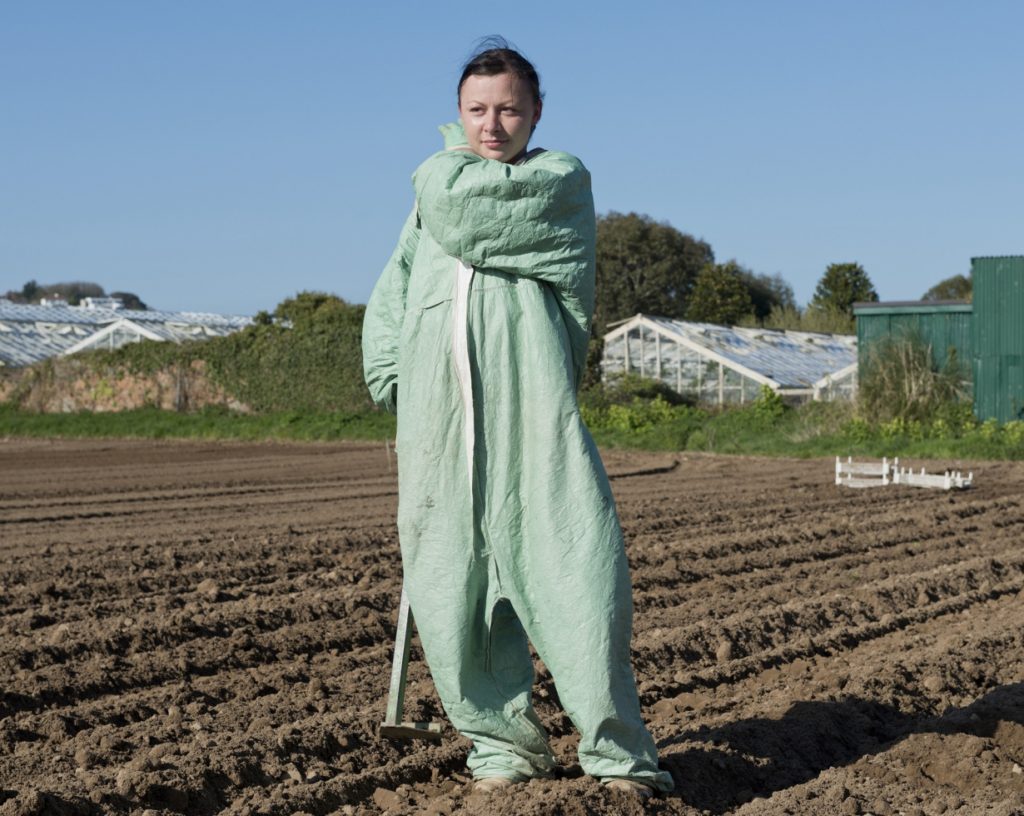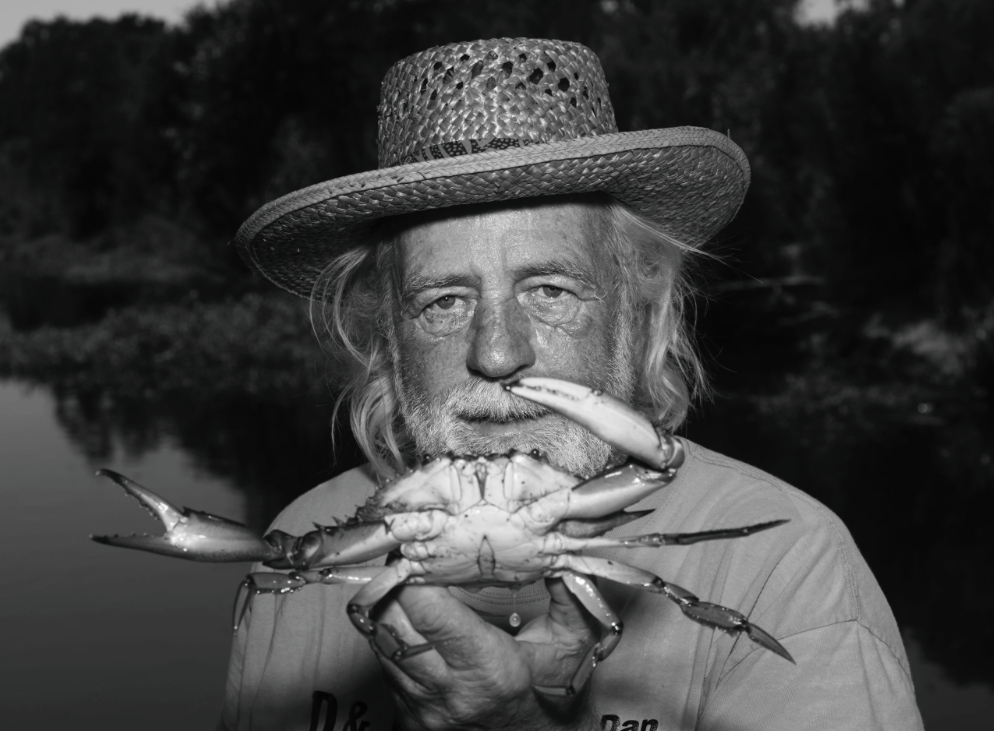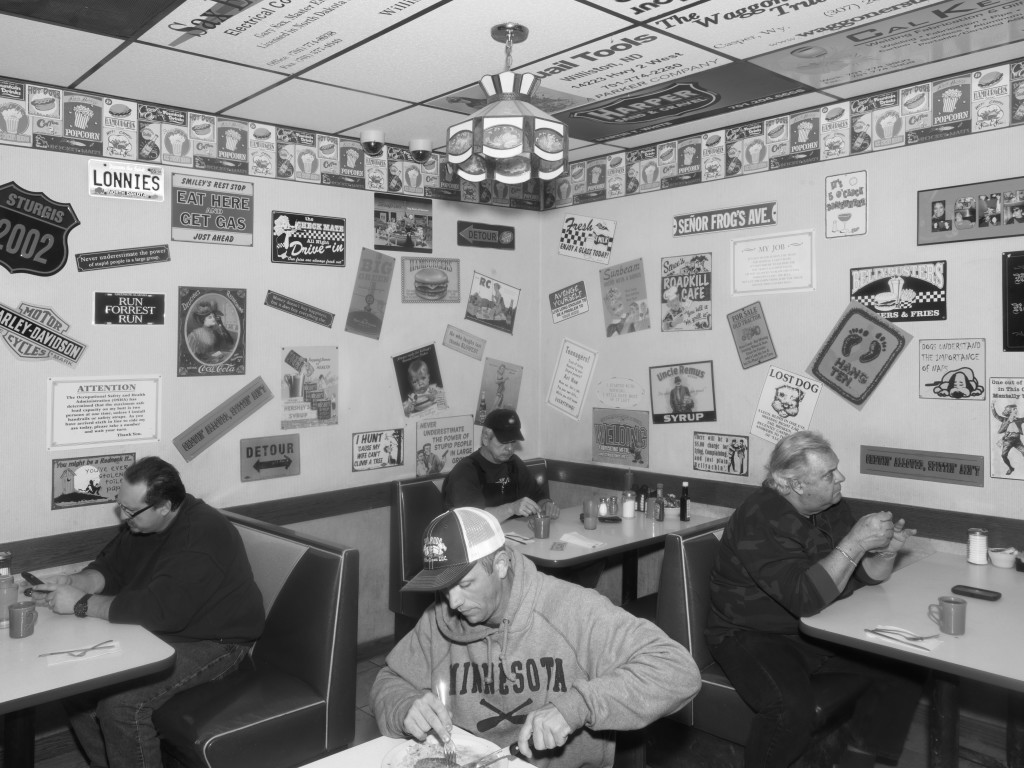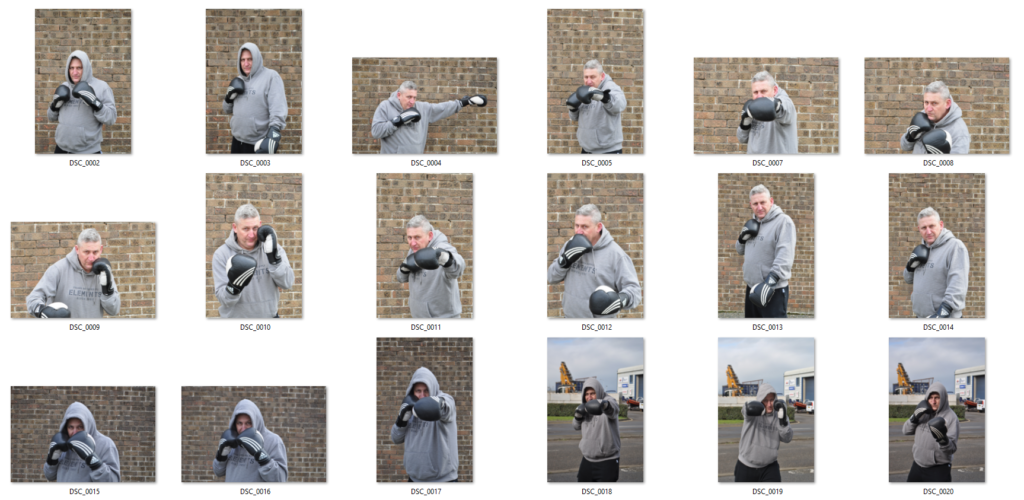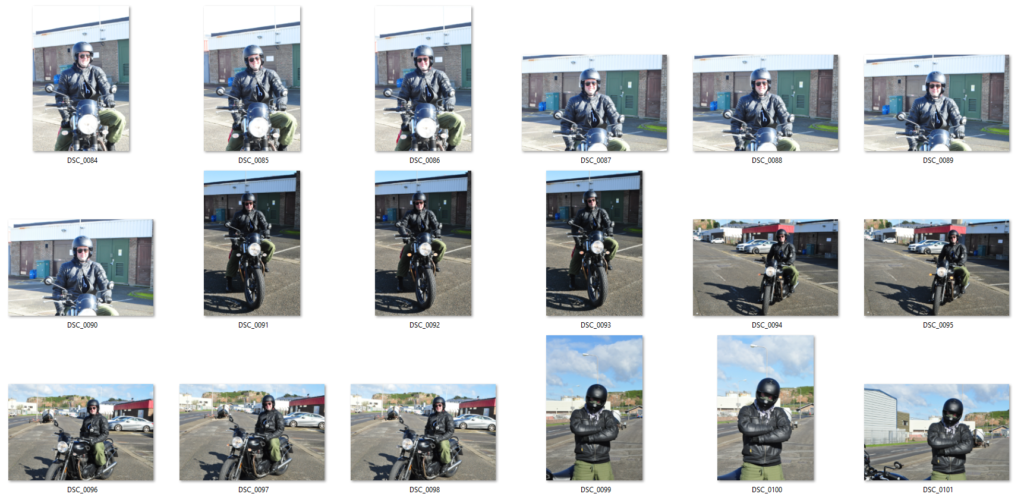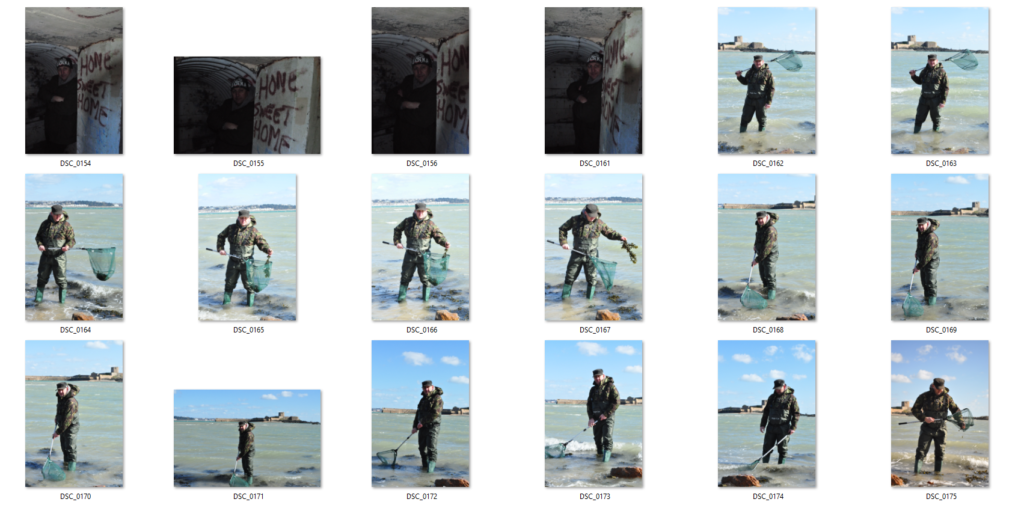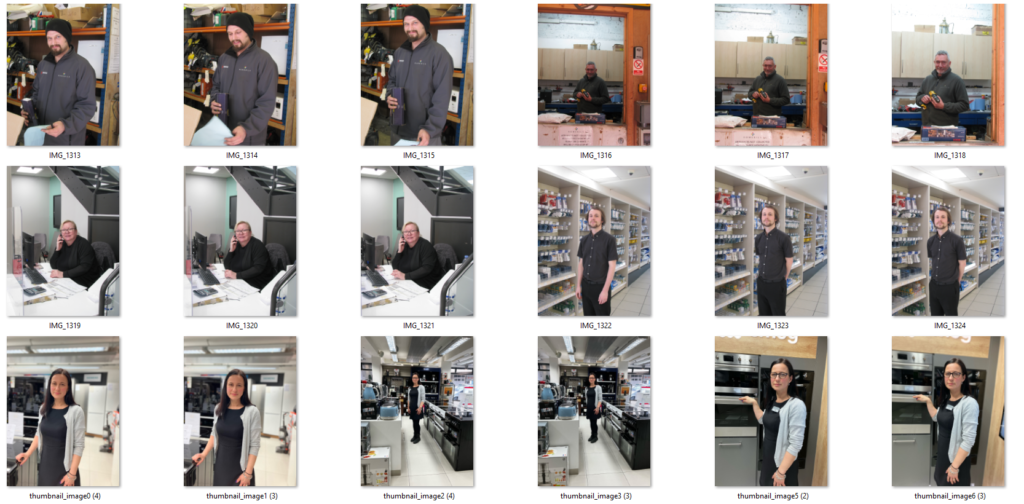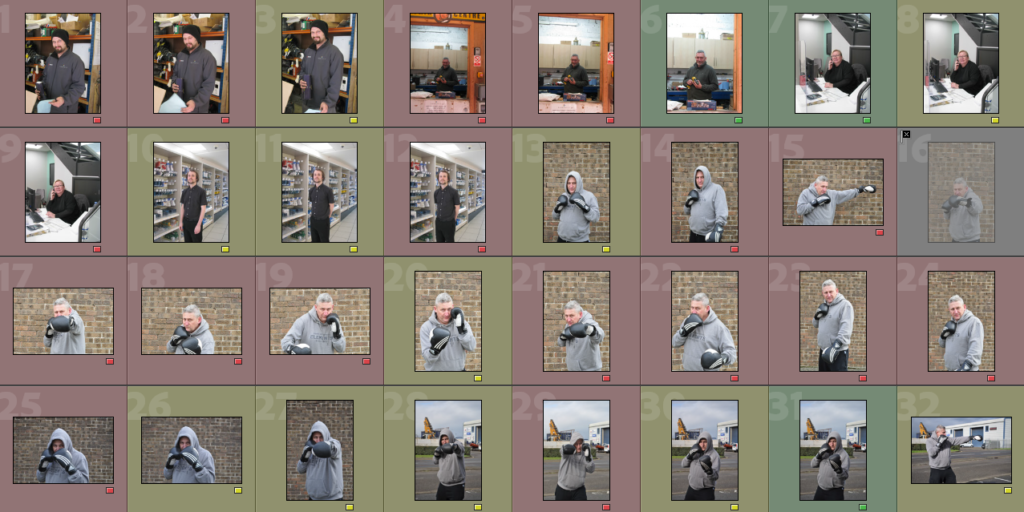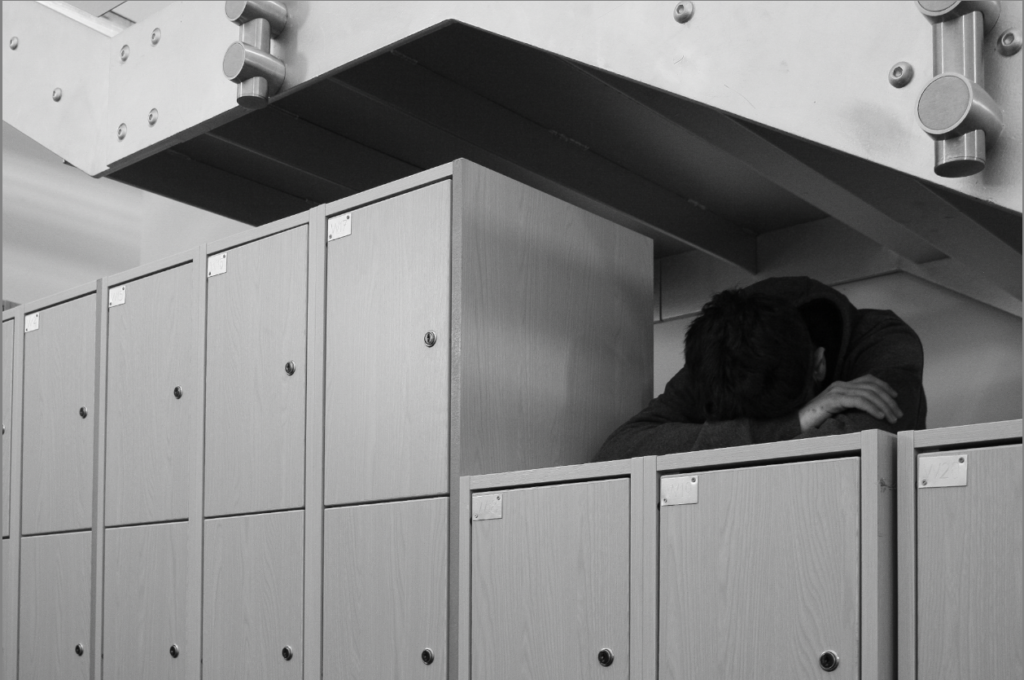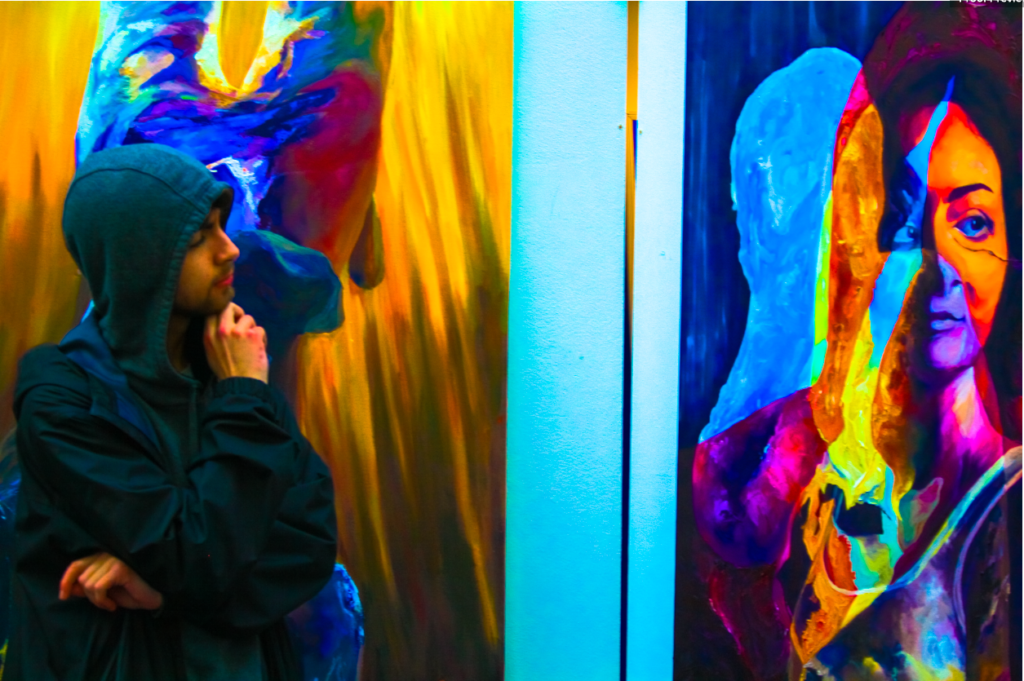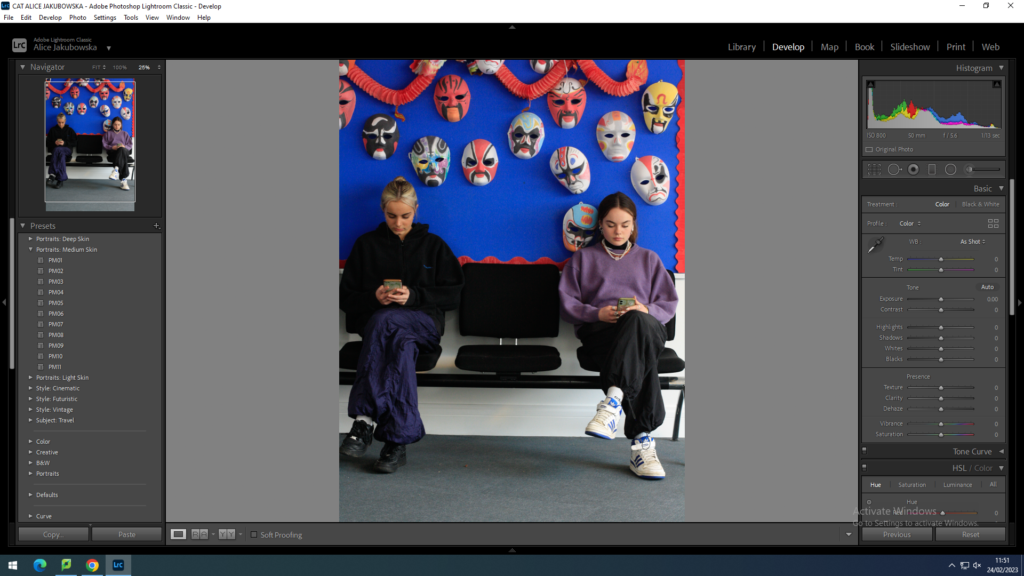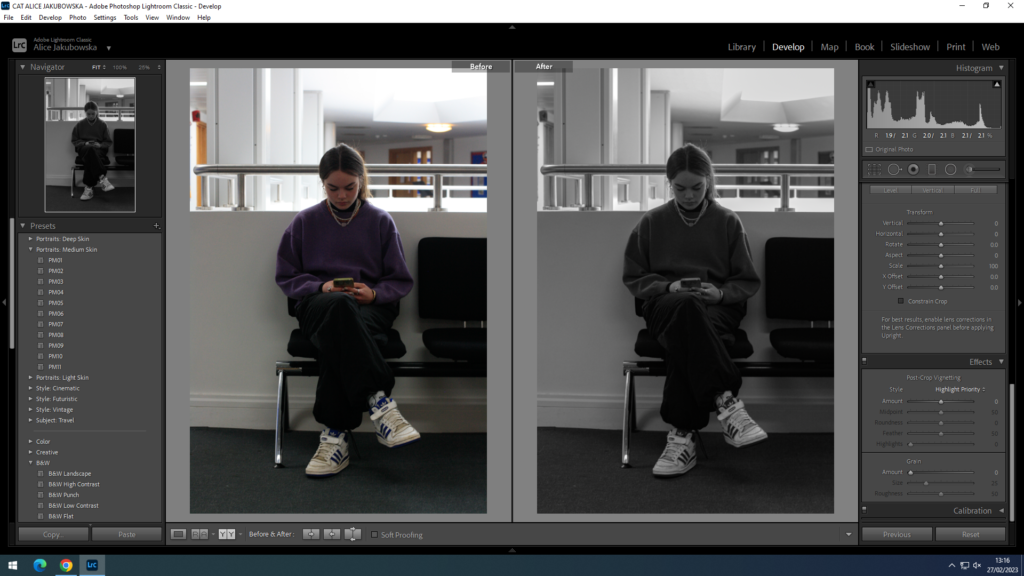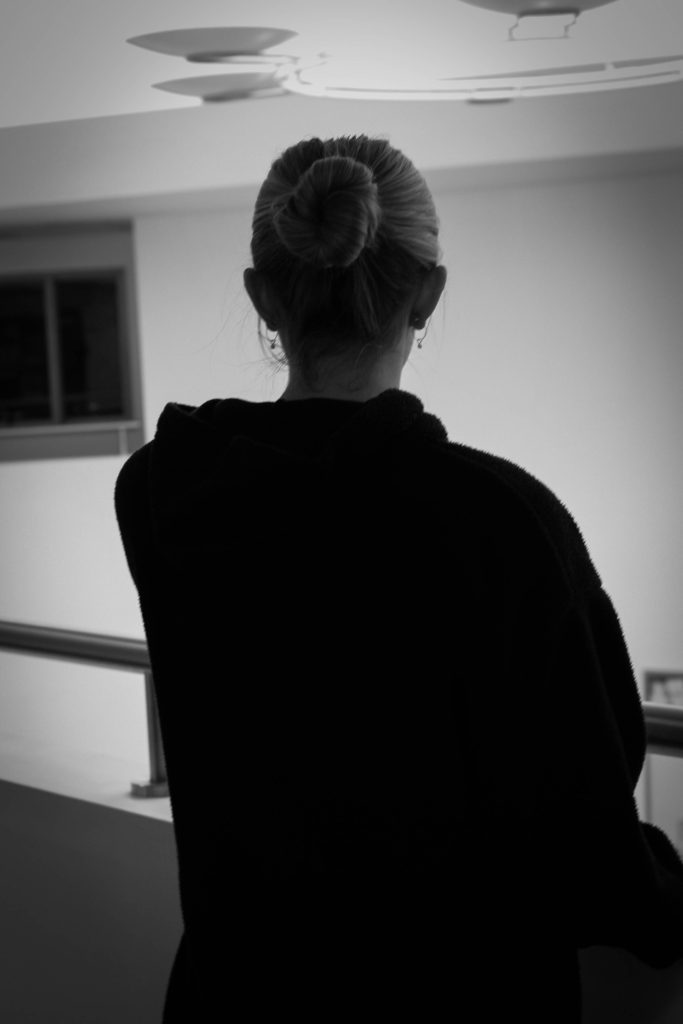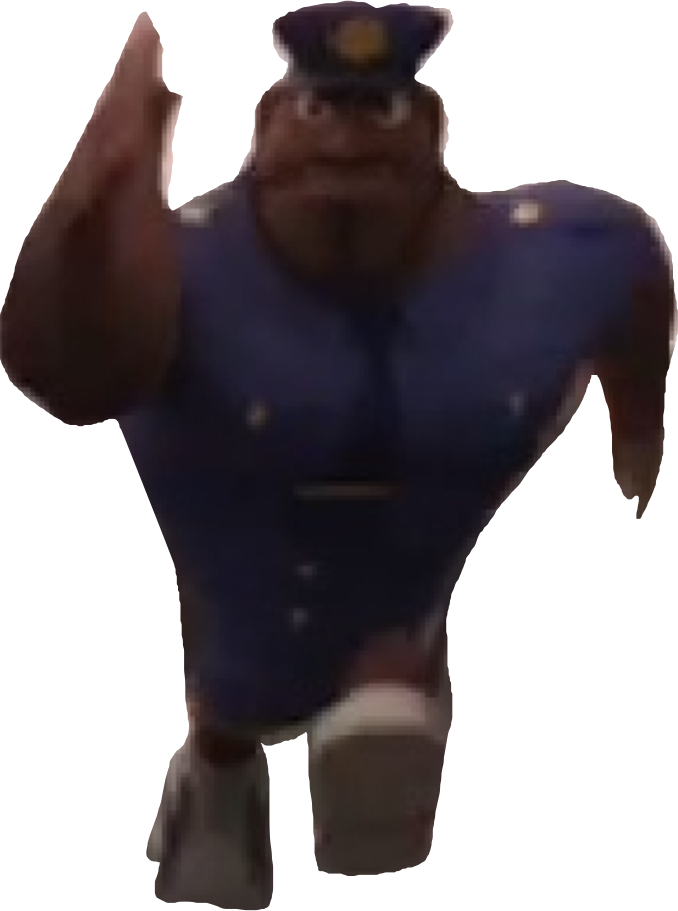

When first looking at this photo there is a clear power dynamic the man in the centre at the forefront of the image staring straight into the camera with a blank expression and clasped hands it gives him a sense of confidence and almost makes him intimidating to look at.
The two pillars either side create symmetry framing him and the industrial looking workshop behind him implying that he owns it. His body creates a triangle in the centre mimicking how his hands are clasped also in a pyramid shape this furthers his sense of power. The ceiling has beams that lead backward creating depth but also drawing the eye back to looking at him. There are skylights on the ceiling that whilst letting light in also create a pattern leading to the back of the workshop helping create depth this is used to create a visually interesting image with harsher lines but also creates a sense of scale within the environment. with The use of backlighting in the image casts the mans face is in shadow obscuring his face whilst also giving him highlighting his silhouette giving him more shape and sharpening his features makes his gaze more severe. A shallow aperture is used to have the foreground focused whilst unfocusing the background keeping the eyes on the man as the focal point of the image.
The man in the photo was Alfried Krupp a German industrialist in charge of making trains in world war 2 many of which were used to transport Jews to concentration camps. The photographer Arnold Newman initially refused the commission the photograph Alfried Kruppbut later accepted seeing it as an opportunity to ‘expose’.



